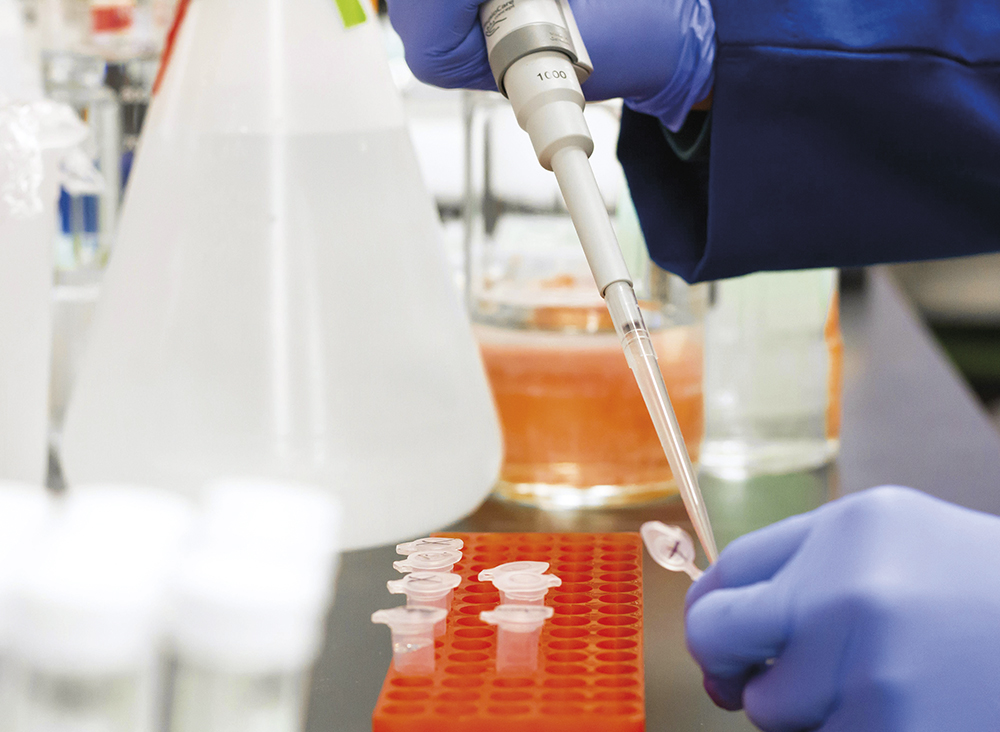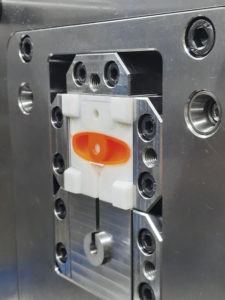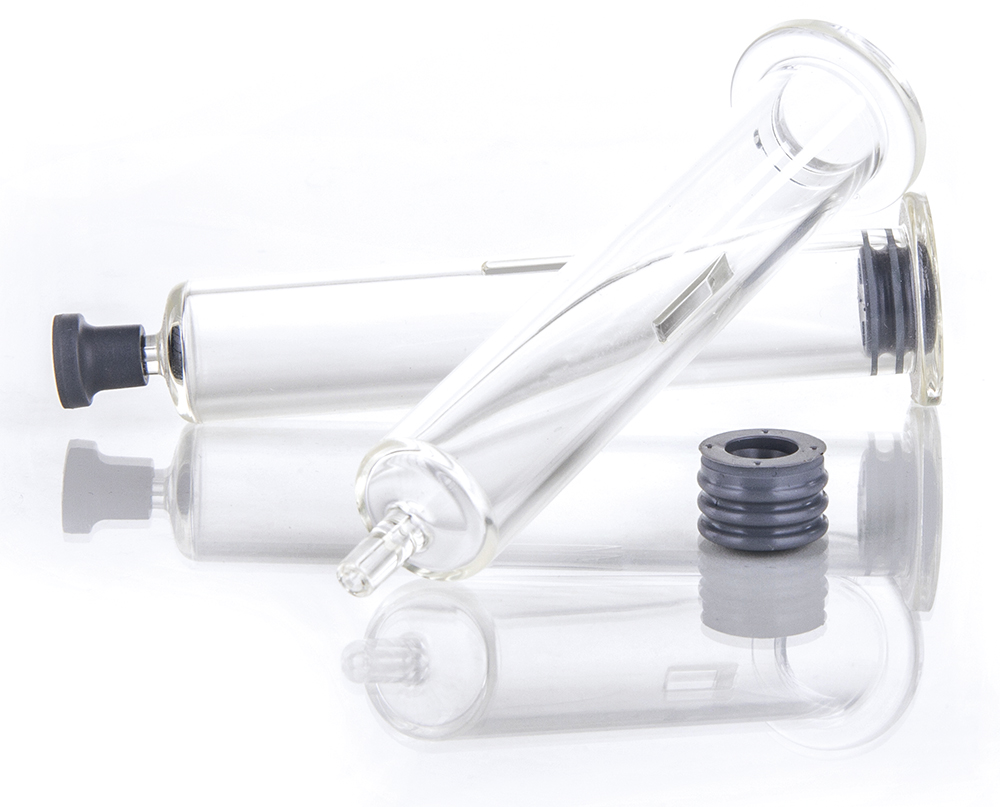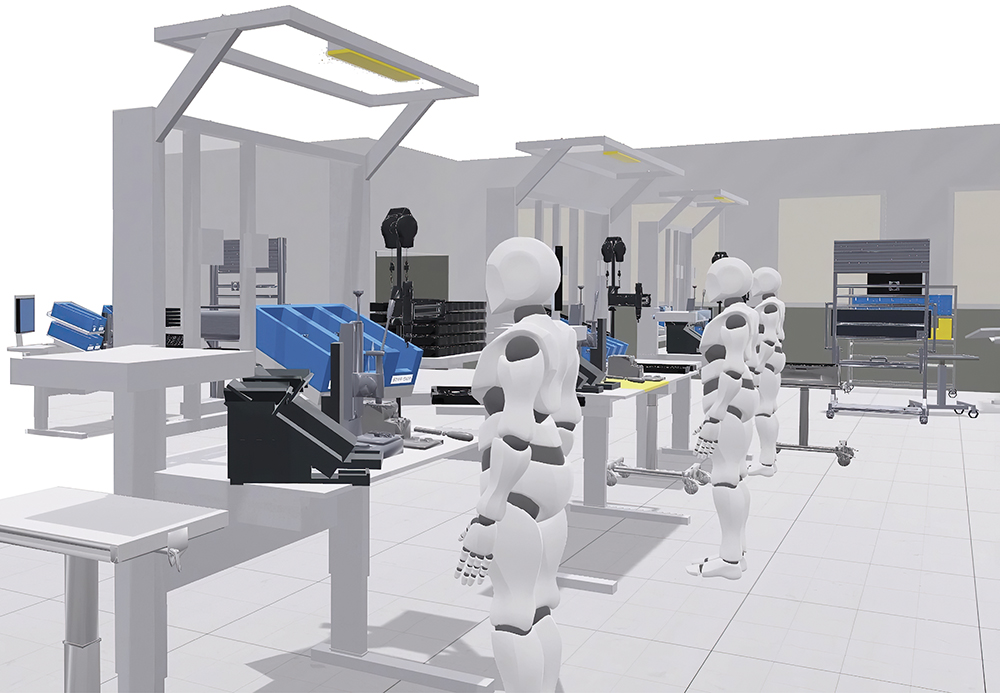To Issue 166
Citation: Vasiev A, “The Rise of the Next-Gen CDMO: Strategies for Reducing Risk and Time to Market”. ONdrugDelivery, Issue 166 (Oct 2024), pp 108–111.
Alex Vasiev discusses how next-generation CDMOs can ensure the successful commercialisation of new combination products by mitigating development risks, accelerating time to market and helping to avoid costly changes late in the development process.
Creating and producing advanced drug-device combination products, such as autoinjectors and pen injectors, requires a depth and breadth of technical expertise. As ever more pharmaceutical companies streamline their supply chains and outsource specialised technical tasks, these challenges are increasingly being shifted to their development partners.
Parenteral drug development is undergoing significant changes, with drug pipelines expanding to include more complex formulations.1 The market’s focus on blockbuster drugs, such as glucagon-like peptide 1 (GLP-1), has also consumed considerable manufacturing capacity, making it difficult to find partners who can manage the technical complexities of new, niche applications while remaining flexible enough to handle smaller volumes, such as those for orphan drugs and clinical batches.
This is where next-generation CDMOs become essential. These specialised partners – who excel in the complex processes of designing, developing and manufacturing combination products – offer a comprehensive approach that combines cutting-edge technical expertise with adaptable manufacturing capabilities to meet the evolving demands of the market.
This article delves into how next-gen CDMOs mitigate development risks, shorten time to market and ensure the successful commercialisation of new combination products. By adopting these strategies, pharmaceutical companies and their partners can strategically position themselves for success in an increasingly competitive market.
“Optimising the stability, efficacy and injectability of new therapeutic formulations presents considerable challenges.”
DEPTH AND BREADTH OF TECHNICAL EXPERTISE
Optimising the stability, efficacy and injectability of new therapeutic formulations presents considerable challenges. Early decisions in formulation development – such as enhancing oxidation resistance, improving pharmacokinetic profiles, enabling sustained release or eliminating the need for cold-chain storage – play a crucial role in determining a drug’s physical and chemical properties (Figure 1).

Figure 1: Fully understanding a formulation’s physical properties is essential for ensuring successful device integration.
De-Risking Formulation-Device Compatibility
If these unique formulation needs are not properly addressed, complications can arise later in development. Decisions aimed at reducing manufacturing and stability risks may inadvertently impact the user experience and, more importantly, the efficacy of parenteral therapies. This highlights the need for a comprehensive approach that considers formulation stability, safety and compatibility with the delivery system and the target patient population.
As the pharmaceutical industry increasingly focuses on biopharmaceuticals, including proteins, peptides, and nucleic acid-based drugs, the complexity of therapeutic modalities continues to grow. The rise in treatments for rare diseases is driving the development of even more advanced therapies, often synthetically engineered or biologically derived, and frequently conjugated with other molecules to enhance their therapeutic effects or stability. Emerging trends include peptide-lipid conjugates, oligonucleotide-sugar conjugates and various combinations with antibodies, small molecules, synthetic polymers such as polyethylene glycol, and RNA.
These advanced therapies often exceed the capabilities of traditional drug delivery platforms, necessitating innovation in delivery device technology. By acknowledging these complexities early in the development process, teams can better anticipate potential challenges and make informed decisions that align with therapeutic, regulatory and commercial goals.
“A next-gen CDMO possesses a deep understanding of how a formulation’s physical characteristics interact with the capabilities of delivery devices.”

Figure 2: Prototype geometry from a ceramic 3D-printed mould insert, a tool for rapidly producing prototype parts.
A next-gen CDMO possesses a deep understanding of how a formulation’s physical characteristics will interact with the capabilities of delivery devices. Providing this level of advanced technical expertise requires the formation of multidisciplinary teams that bring together knowledge from chemistry, biology, material science, engineering and human factors – expertise that is not commonly found within large manufacturing organisations. Designing for Patients Using Human Factors In recent years, the need for intuitive, user-friendly medical devices has become evident, especially as more therapies shift to self-administration at home. Incorporating patient insights early in the design process ensures that devices are functional, manufacturable and emotionally and cognitively aligned with patient needs. Early-stage user research, patient process mapping and iterative usability studies are vital for refining device designs (Figure 2).
As the population ages and co-morbidities rise, particularly in rare diseases with complex pathologies, a platform approach can encounter unexpected challenges in user interface design and adaptability.
A next-gen CDMO supports clients by offering in-house human factors expertise and de-risking changes and their impact on the user interface by ensuring a deep understanding of its impact on the device design and its manufacturability. This comprehensive approach streamlines the development process and, avoids costly late-stage changes, shortening time-to-market.
Proactive Attitude to New Technologies
New technologies, such as augmented reality (AR) and virtual reality (VR), have become valuable tools in developing and de-risking production processes, particularly before committing to costly capital expenditures (CAPEX). AR and VR enable production teams to simulate and visualise processes in a virtual environment, allowing detailed analysis and refinement of workflows, equipment layouts and overall processes before any physical implementation (Figure 3).

Figure 3: The hallmark of a next-gen CDMO is reduced iteration and a right-first-time approach to development.
Next-gen CDMOs use AR and VR to enhance cross-functional collaboration, allowing engineers, designers and operators to interact with a virtual model of the production line. This collaborative approach ensures that stakeholders share a clear understanding of the proposed processes, leading to better-informed decisions and a more co-ordinated implementation strategy.
Beyond process development, AR and VR are instrumental in training and onboarding personnel. By immersing employees in a realistic virtual environment, these technologies provide hands on experience with new equipment and procedures, ensuring that staff are fully prepared before actual production begins (Figure 4). This approach enhances workforce readiness and minimises the potential for human error during the early stages of production. By adopting AR and VR, companies can make more informed CAPEX decisions, thereby minimising financial risk and maximising operational efficiency.

Figure 4: Sanner’s AR capability allows manufacturing lines to be fully evaluated during development and before implementation.
STREAMLINED DESIGN TRANSFER
Design transfer is a critical stage where design and manufacturing teams collaborate to ensure that product designs are innovative and manufacturable at scale. For combination products such as autoinjectors, multidisciplinary input is essential. Understanding material behaviour during processes such as injection moulding or metal stamping helps in designing components that are functional, easy to manufacture and less prone to defects, thereby reducing risks.
A streamlined information exchange between integrated CDMO design and manufacturing teams minimises the risk of costly design changes and production delays. By understanding material capabilities and anticipating tolerance ranges and draft angles, the design team can streamline the transition to production. An integrated design transfer process considers automation potential and scaling strategies from the outset, using historical performance data and manufacturing insights. This proactive approach avoids bottlenecks and quality issues, ensuring that products can be manufactured efficiently at scale with robust quality control systems. This integration is fundamental to achieving quality by design and ensuring that critic alto- quality requirements are effectively applied to components at the dimensional and functional levels.2
ADAPTABLE MANUFACTURING CAPACITY
The ability to expand capacity is a hallmark of a next-gen CDMO. In today’s rapidly evolving pharmaceutical and medical device landscape, the ability to adapt manufacturing capacity is crucial for staying competitive and meeting increasingly diverse customer needs. This is especially true in the context of today’s parenterals market where:
- Increasing global demand for GLP-1 receptor agonists and other blockbuster therapeutics is consuming significant production capacity3
- The number of orphan drug designations with small patient populations has more than doubled over the previous decade.4
This presents conflicting needs, requiring flexibility and agility to accommodate both small clinical batches and high-volume production, even in a market where capacity is at a premium.
Expanding capacity is not just about adding more production lines or increasing output. It requires a strategic approach that involves anticipating market trends, investing in scalable technologies and building flexible infrastructure that can adapt to changes in demand. Modular manufacturing facilities that can be quickly reconfigured to handle different products or scales of production offer the ability to pivot rapidly in response to customer needs – whether that means scaling up production of an existing product or quickly bringing a new product to market. An example of this is Sanner’s new flagship facility outside of Bensheim (Germany).5
Aside from the facilities themselves, expanding capacity includes optimising supply chains to ensure that raw materials and components are available when needed. This involves building strong relationships with suppliers, maintaining safety stock of critical materials and implementing robust risk-management strategies to mitigate potential disruptions. A strong supply chain can respond more effectively to surges in demand, ensuring that production schedules are not delayed by material shortages.
SECURITY OF SUPPLY
In the last decade, many organisations have been severely impacted by unforeseen vulnerabilities in their supply chains and the raw material shortages resulting from disruptions such as epidemics and wars. While these risks are difficult to predict, they have been summarised by McKinsey and Co as stemming from a lack of robust processes to identify and effectively manage growing supply-chain risks in an increasingly interconnected world.6 New threats, such as cyber-ransom attacks, are emerging alongside more traditional and long-recognised supplier risks, such as supplier bankruptcy.
In complex combination products, the probability and severity of many supply-chain risks are challenging to ascertain, especially when the supply chain is fragmented across multiple sources and tiers. These issues can be addressed systematically by cataloguing and mitigating known risks while enhancing the organisation’s resilience to inevitable unknown risks.
To ensure security of supply, organisations must facilitate flexibility in sourcing, ongoing risk analysis, safety stock holding, governance, reporting, key performance indicator monitoring and continuous improvement. Transparency and visibility of incoming supply chains are crucial for saving time and ensuring that mitigation activities are well-informed and swiftly executed. As the pharmaceutical industry trends towards more outsourced, leaner organisations, CDMOs are inheriting many of these challenges and are implementing strategies and processes as part of a next-gen CDMO offering, including:
- Holistic risk identification and mapping: Established, holistic risk identification and mapping processes across the entire value chain of the product.
- Integrated risk management framework: A risk management framework that captures the severity of risks on the organisation, the likelihood of occurrence and the organisation’s preparedness to respond to such risks. A consistent scoring methodology allows identified risks to be ranked and prioritised.
- Effective monitoring strategy: An effective monitoring strategy informed by a quality risk exposure score based on measurable production metrics that can be tracked regularly.
- Governance and review processes: Implement governance and review processes, including a cross-functional risk board with representatives from every node of the value chain. This system requires the CDMO to have significant internal technical and statistical expertise to provide guidance on identifying and mitigating risks.
CONCLUSION
Next-gen CDMOs push the boundaries of drug delivery and parenteral development by bringing broad technical expertise and operational adaptability. As the complexity of biopharmaceuticals and drug-device combinations continues to rise, these partners stand out by offering specialised capabilities that are essential for navigating the challenges of modern drug development. From the essentials of design transfer through de-risking the injectability of novel formulations to designing user-centric devices that enhance patient compliance, next-gen CDMOs are integral to the successful commercialisation of new therapies.
Their commitment to robust supply chain management and risk mitigation ensures uninterrupted production, even in the face of global disruptions. For pharmaceutical companies aiming to bring the most sophisticated parenteral therapies to market, next-gen CDMOs are not just partners; they are critical enablers of success, driving efficiency across the entire development lifecycle.
REFERENCES
- “What’s Trending: Parenteral Drug Development & Manufacturing”. DCAT Value Chain Insights, Feb 15, 2024.
- Neadle S, “Combination Products Risk Management and Control Strategies”. PDA, accessed Sep 2024.
- “GLP-1 Demand Fuels Growth in Pharmaceutical Manufacturing Capacity”. Contract Pharma, Jul 26, 2023.
- Fermaglich LJ, Miller KL, “A comprehensive study of the rare diseases and conditions targeted by orphan drug designations and approvals over the forty years of the Orphan Drug Act.” Orphanet J Rare Dis, 2023, Vol 18(1), p 163.
- “New state-of-the-art flagship manufacturing facility”. Company Web Page, Sanner, accessed Sep 2024.
- Bailey T et al, “A practical approach to supply-chain risk management In supply-chain risk management.” McKinsey and Company, Mar 2019.

